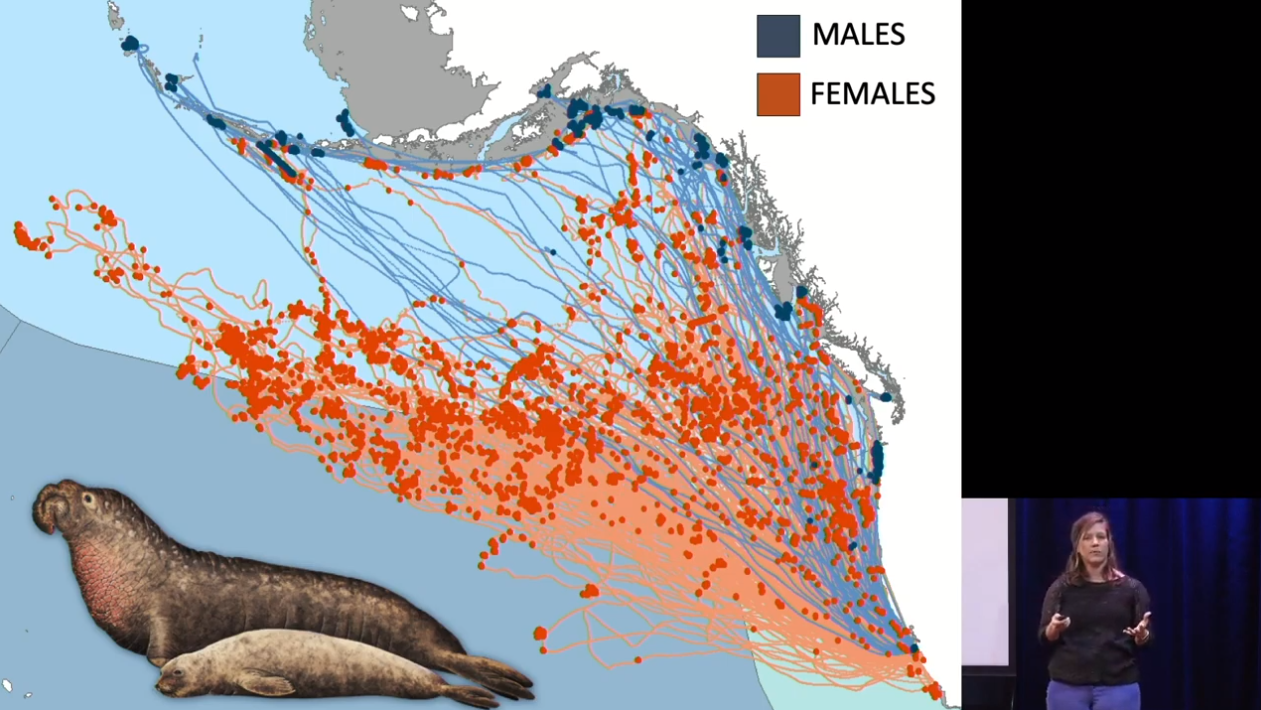URI Ph.D. candidate’s research expands understanding of how gray wolves function within aquatic habitats
Read MoreThe wild canines have the same muscles used by domestic dogs to create the wide-eyed, pleading look that captures humans’ hearts
Read MoreConservation scientists are studying the health of Antarctic whales using a custom-made crossbow.
The researchers use the device to take remote biopsies from wild humpback whales in order to study the health of the animals.
It’s an effort that is revealing how the food supply of Antarctic whales could be affected by climate change. With sea ice declining at an alarming rate in this fragile environment, the whales’ giant bodies hold clues about the effect that’s having on the whole marine ecosystem.
BBC science correspondent Victoria Gill joined a whale research mission, led by the wildlife charity WWF, in the Antarctic Peninsula.
Read MoreAbout the differences between sexes, the best methods to sedate a napping seal, and studying marine animal while living in Texas.
Read MoreOn this week's episode of Aquadocs, host Michelle Greenfield interviews Dr. Sarah Kienle, assistant professor at Baylor, about her experience conducting remote field work with pinnipeds in Antarctica. Tune in as we talk about the process of sedating and collecting samples from these incredible creatures and highlight the importance of training veterinarians to support remote field expeditions.
Read MoreBy comparing the bones of ancient and contemporary seals, researchers say a particular biting style helped the marine mammals’ landlubber ancestors move into the oceans.
Read MoreGrad Slam 2019, award winning presentation: Sex-Specific Foraging Strategies of Seals
Read MorePinniped researcher’s funny and insightful presentation at Grad Slam 2019 answers the burning question: Why do male and female elephant seals look so different?
Read MoreDr. Nancy Foster Scholar Sarah Kienle researches how northern elephant seals that breed within Monterey Bay National Marine Sanctuary feed.
Read MoreThis oceanbites post was contributed by guest author Sarah Kienle. Sarah is a PhD student at the University of California Santa Cruz. Sarah is a NOAA Nancy Foster Scholar who studies marine mammals, and recent research took her and her lab to Antarctica to study leopard seals. The original version of this post and more information about the trip and research in the Costa lab can be found on the Costa Lab website.
Read More…Great white sharks typically attack from below and behind their prey. The relationship between predator and prey is a balance, between attack and avoidance. UC Santa Cruz researcher Sarah Kienle is studying elephant seal feeding behavior at Guadalupe Island off Baja California. Her collaborators have observed that seals returning to that island are likely to approach the beaches from below. …
Read MoreWhen female elephant seals dive for food, they stay down 20 to 30 minutes. Their exact diet is not yet documented.
Read MoreIn sanctuaries like Monterey Bay National Marine Sanctuary, you'll find extraordinary opportunities to observe wildlife -- like elephant seals!
Read More











